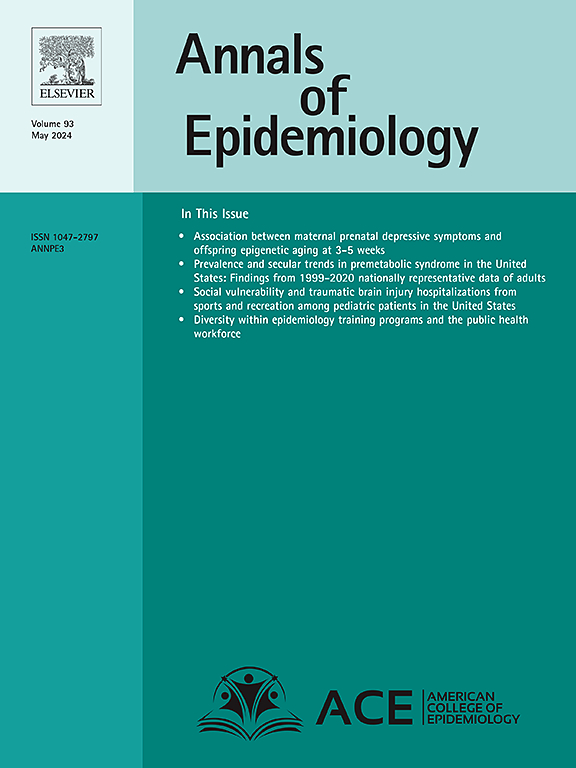Spatial analysis of HPV infection and contextual factors associated with higher HPV prevalence
IF 3.3
3区 医学
Q1 PUBLIC, ENVIRONMENTAL & OCCUPATIONAL HEALTH
引用次数: 0
Abstract
Objectives
To identify areas with high rates of high-risk Papillomavirus (hrHPV) infection and associated contextual factors in the Centre Region of Portugal at the municipality level.
Study design
We conducted an ecological study in 78 municipalities located in the Central Region of Portugal from March 2019 to December 2022.
Methods
We used data from the cervical cancer screening (CCS) program database after switching to primary HPV testing. Demographic, socio-economic, and healthcare availability variables were extracted from official sources (Statistics Portugal and Central Region Health Administration Information Systems). Spatial analysis and logistic generalised linear models were used to identify areas of high hrHPV infection and associated contextual factors.
Results
The overall hrHPV infection prevalence was 9.9 %. We found three significant clusters, predominantly in municipalities near major urban centres. These clusters were characterised by higher population density, a greater proportion of younger women, higher median income per inhabitant, a larger proportion of residents with graduate degrees, and increased availability of healthcare units.
Conclusions
This study has uncovered the geographical distribution of hrHPV infection at the municipal level and highlights the contextual factors associated with higher prevalence. Identifying demographics and socio-economic predictors of high hrHPV infection could support public health programs by targeting interventions to specific populations and contexts. This might open up new scenarios for improving prevention and control strategies, offering more intensive screening in areas with the most urgent needs.
HPV感染的空间分析和与HPV高患病率相关的环境因素。
目的:确定葡萄牙中部地区市级高危乳头瘤病毒(hrHPV)感染率高的地区及其相关背景因素。研究设计:我们于2019年3月至2022年12月在葡萄牙中部地区的78个城市进行了一项生态研究。方法:我们使用的数据来自宫颈癌筛查(CCS)程序数据库后切换到原发性HPV检测。人口统计、社会经济和医疗保健可用性变量从官方来源(葡萄牙统计局和中央地区卫生管理信息系统)中提取。空间分析和logistic广义线性模型用于确定hrHPV高感染率地区和相关背景因素。结果:hrHPV总感染率为9.9%。我们发现了三个重要的集群,主要分布在靠近主要城市中心的城市。这些集群的特点是人口密度更高,年轻妇女比例更高,人均收入中位数更高,拥有研究生学位的居民比例更高,医疗保健单位的可用性更高。结论:本研究揭示了市一级hrHPV感染的地理分布,并强调了与较高患病率相关的环境因素。确定高hrHPV感染的人口统计学和社会经济预测因素可以通过针对特定人群和环境的干预措施来支持公共卫生计划。这可能为改进预防和控制战略开辟新的前景,在需求最迫切的地区提供更密集的筛查。
本文章由计算机程序翻译,如有差异,请以英文原文为准。
求助全文
约1分钟内获得全文
求助全文
来源期刊

Annals of Epidemiology
医学-公共卫生、环境卫生与职业卫生
CiteScore
7.40
自引率
1.80%
发文量
207
审稿时长
59 days
期刊介绍:
The journal emphasizes the application of epidemiologic methods to issues that affect the distribution and determinants of human illness in diverse contexts. Its primary focus is on chronic and acute conditions of diverse etiologies and of major importance to clinical medicine, public health, and health care delivery.
 求助内容:
求助内容: 应助结果提醒方式:
应助结果提醒方式:


